Domestic anti-tank self-propelled artillery. 2-Part I
To fight the new medium and heavy tanksthat appeared in the USA and Great Britain, in the USSR after the war, several types of anti-tank self-propelled guns were developed.
In the middle of the 50-x began the production of a T-54 medium-propelled tanker, the SAU SU-122, designed on the base. New self-propelled gun, designated to avoid confusion as SU-122-54, was designed and manufactured taking into account previous combat experience of using ACS in the war years. A.E. was appointed lead designer. Sulin.
The main armament of the SU-122 was the D-49 cannon (52-PS-471D) - an upgraded version of the D-25 cannon with which the post-war serial IS tanks armed themselves. The gun was equipped with a wedge horizontal semi-automatic shutter with an electromechanical filling mechanism, due to which it was possible to bring the gun firing rate to five rounds per minute. The lifting mechanism of the sector-type cannon provides the tool pointing angles from -3 ° to + 20 ° vertically. When attaching an elevation angle to the 20 °, the firing range using OF of ammunition was 13400. Shooting from a cannon was conducted with tank armor-piercing and high-explosive fragmentation shells, as well as high-explosive fragmentation grenades of M-30 and D-30 howitzers. With the advent of 1960 in the beginning. The American tank M60 and the English tank Chiefen for the D-49 rifled cannon developed sub-caliber and cumulative projectiles. Ammunition - 35 shots of separate-sleeve type. Additional weapons were two 14,5-mm machine gun KPVT. One with a pneumatic reloading system is paired with a gun, the other is anti-aircraft.
The SAU case is completely closed and welded from armor rolled plates, the thickness in the frontal part is 100-mm, the board is 85-mm. Combat compartment was combined with the control department. In front of the case was a conning tower, which housed a gun.
In the rotating turret, located on the right of the wheelhouse roof, a range finder was installed.
SAU SU-122-54 would not be equal on the battlefields of the Second World War. But the improvement of the tanks themselves, which became capable of striking not only fire weapons and infantry, but also armored targets, as their weapons improved, and the appearance of the ATGM, made the production of specialized PTs of SAU senseless.
From 1954 to 1956 years, the total number of cars produced was 77 units. Subsequently, after the repair, these machines were converted into armored tractors and technical support vehicles.
By the beginning of the 80-x in most armies of developed countries, self-propelled anti-tank artillery installations have almost disappeared. ATGWs and partly the so-called “wheeled tanks” assumed their functions — lightly armored universal vehicles with powerful artillery weapons.
In the USSR, the development of the tank destroyer continued to provide anti-tank defense for the airborne units. Especially for the Airborne Forces (Airborne Forces), several types of ACS were designed and manufactured.
The first model of armored vehicles, designed specifically for the airborne troops, was armed with 76-mm cannon ASU-76, created under the leadership of N. A. Astrov. The design of the machine was developed in October 1946 - June 1947 of the year, and the first prototype of the ACS was completed in December of 1947. ASU-76 had a crew of three, minimized size, light bulletproof reservation and power plant, created on the basis of car units. After the tests carried out in 1948 — 1949 were completed, the 17 of December 1949 of the ACS-76 was put into service, but its mass production, with the exception of two machines of the installation batch that did not withstand ground testing, was not carried out. Due to a number of reasons, first of all, the abandonment of the production of a heavy transport glider Il-1950 - the only means of landing an 32-ton vehicle at that time.
In 1948, in the design bureau of the plant No. 40, under the leadership of N.A. Astrov and D.I. Sazonov, an automated control system for automated control systems 57-mm, equipped with X-NUMX-mm semi-automatic gun X-57, with ballistics of Grabin ZiS-51 was created. In 2, ASU-1951 was adopted by the Soviet Army.
The main armament of the ACS-57 was the 57-mm semi-automatic rifled gun H-51, in the basic modification or modification of the H-51M. The gun had a monoblock-barrel length 74,16 caliber. The technical rate of fire of the X-51 was up to 12, the practical sighting - 7 ... 10 shots per minute. The angles of horizontal guidance of the instrument were ± 8 °, vertical guidance - from −5 ° to + 12 °. Ammunition H-51 was 30 unitary shots with all-metal shells. The ammunition could include shots with armor-piercing, sub-caliber and fragmentation shells, the assortment of ammunition H-51 was unified with the anti-tank gun ZIS-2.
In the early years, for the self-defense of the ASU-57 crew, the 7,62-mm SGM machine gun or RPD light machine gun was being transported on the left side of the combat compartment.
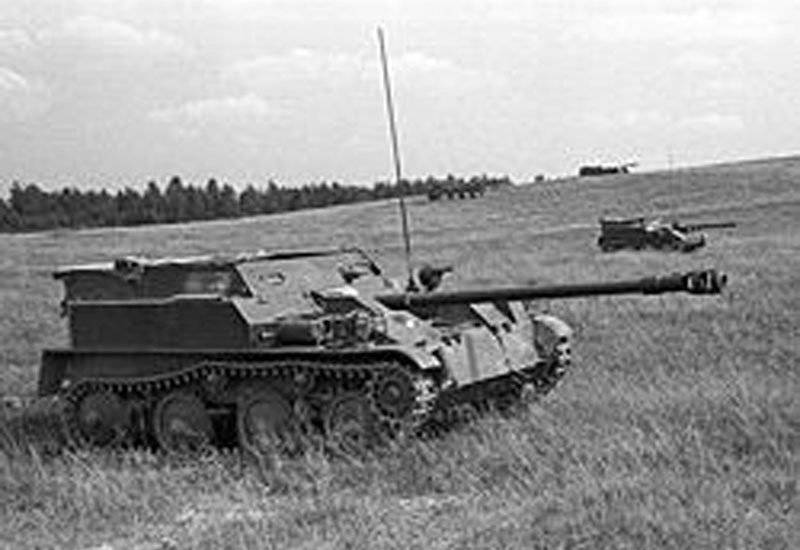
ASU-57 had light bulletproof armor protection. The body of the ACS, of a semi-closed type, was a rigid box-bearing structure assembled of 4 and 6 mm thick armor-steel sheets, which were joined together mainly by welding and also non-Neural duralumin sheets connected to the rest of the hull parts by means of riveting.
ACS-57 was equipped with an in-line 4-cylinder four-stroke carburetor automobile engine model M-20Е produced by the GAZ factory, with a maximum power of 55 hp.
Before the advent of the military transport aircraft of the new generation, they could only be transported by air from the AMS-57 using the Yak-14 towed transport glider. ASU-57 drove into the airframe and left it under its own power through the flush nose; In flight, the installation was fastened with cables, and to prevent rocking, its suspension nodes were blocked onto the hull.
The situation with the adoption of the An-8 and An-12 high-capacity military military transport aircraft has changed significantly, ensuring the landing of the ASN-57 in both landing and parachute ways. Also for landing ACS landing method could be used heavy military transport helicopter Mi-6.
The USSR Airborne Forces were equipped with the ASU-57 in relatively small quantities. So, according to the staffing table, in the seven airborne divisions that were available by the end of the 1950-s, not counting one training division, in total there should have been only 245 ACS. For the characteristics of the design, the SAU troops received the nickname “Holodopy Ferdinand”, previously worn by the SU-76, which was replaced by the ACS-57 in the self-propelled artillery divisions.
Since the transport equipment used by the Airborne Forces in the early 1950s did not have airborne assault equipment, the ACS was also used as a light tractor and for transporting up to four paratroopers on the armor, the latter was used, in particular, during enemy flank or rear patrols, when a quick transfer of forces was required.
The appearance of more advanced models in the Airborne Forces did not entail the removal of the AMS-57 from service; the latter, only after a series of reorganizations, were transferred from the divisional link of the Airborne Forces to the regimental one. ASU-57 for a long time remained the only one capable of providing fire support to a landing force with a model of an airborne armored vehicle capable of parachuting. As the paratroop regiments in the 1970s re-equipped with new airborne BMD-1, which provided anti-tank defense and fire support down to the level of compartments, the regimental batteries of the ACS-57 gradually disbanded. The final decommissioned ACS-57 were in the early 1980-s.
The success of the easy-to-fly ASU-57 self-propelled guns gave the Soviet command a desire to have an average self-propelled gun with an 85-millimeter cannon.
In 1959, the developed OKB-40, headed by N.A. Astrov
ASU-85. The main armament of the ACS-85 was the 2А15 gun (factory designation - Д-70), which had a monoblock barrel, equipped with a muzzle brake and an ejector to remove residual powder gases from the barrel. A hand-operated sector lifting mechanism provides elevation angles ranging from -5 to + 15 degrees. Horizontal guidance - 30 degrees. 7,62-mm machine gun SGMT was paired with a gun
The 45 unitary ammunition load carrying unit shots included unitary 21,8 kg shots with several types of shells. These included high-explosive fragmentation grenades UO-365K weighing 9,54 kg, which had an initial speed of 909 m / s and intended to destroy manpower and destroy enemy fortifications. When firing at mobile, armored targets - tanks and self-propelled guns - armor-piercing tracer sharp-headed shells Br-365K weighing 9,2 kg with an initial speed of 1150 m / s were used. These shells could conduct aimed fire at a distance of 1200 m. An armor-piercing projectile at a distance of 2000 m pierced an armor plate with a thickness of 53 mm, located at an angle of 60 °, and a cumulative projectile - 150 mm. The maximum range of high-explosive fragmentation projectile was 13400 m.
The security of the ACS-85 in the frontal part of the hull was at the level of the T-34 tank. The corrugated bottom gave the case additional strength. In the nose part on the right there was a department of management in which the driver’s seat was located. The fighting compartment was in the middle of the car.
The 6-cylinder, V-shaped, push-pull 210-strong diesel engine YMZ-206В was used as the power plant.
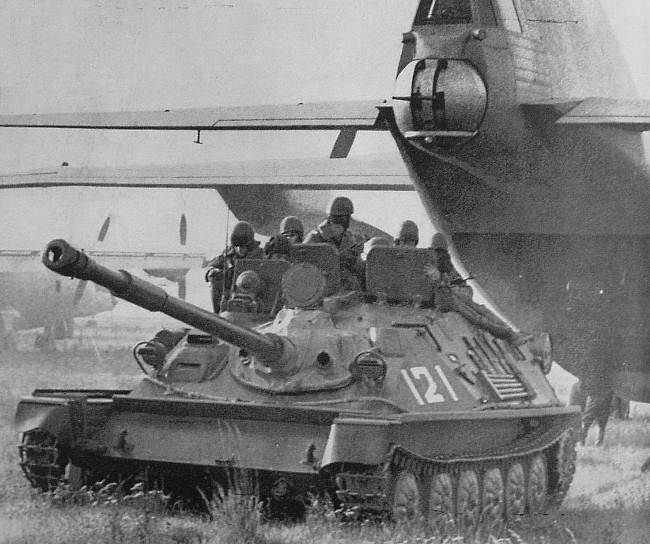
For a long time, self-propelled guns could only parachute by landing method. Only in 70-ies were special parachute systems developed.
ASU-85, as a rule, were transported by military transport An-12. The gun was mounted on a platform to which several parachutes were attached. Before contact with the ground, special brake rocket engines began to work, and the self-propelled unit landed safely. After unloading the machine was transferred to the combat position for 1-1,5 minutes.
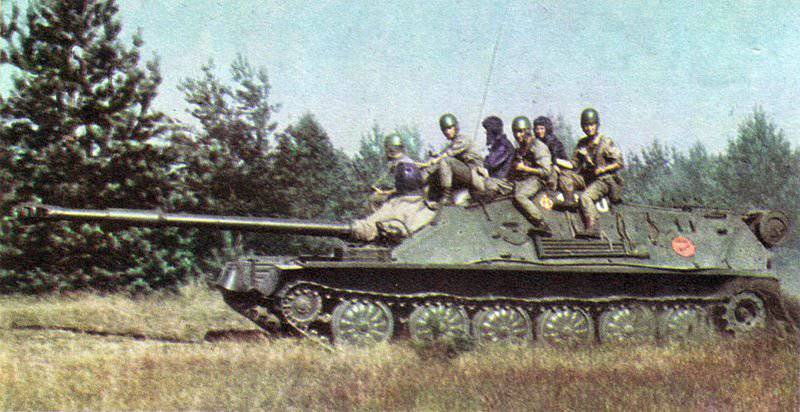
ASU-85 was in production from 1959 to 1966 a year, during which time the unit was upgraded twice. First, a ventilated roof made of rolled sheets of steel 10 mm thick with four hatches was installed over the fighting compartment. In 1967, the ACS-85 participated in the Arab-Israeli conflict, known as the “six-day war,” and the experience of their combat use revealed the need to install an 12,7-mm anti-aircraft machine gun on the chopping post. Delivered to the GDR and Poland. She took part in the initial period of the Afghan war as part of the artillery units of the 103 airborne division.
The bulk of the vehicles produced was directed to the acquisition of individual self-propelled artillery battalions of airborne divisions. Despite the cessation of mass production, the ACS-85 remained in service with the airborne troops until the end of the 80s of the last century. ASU-85 was decommissioned by the Russian army in 1993 year.
In 1969, the BMD-1 airborne combat vehicle was commissioned. What allowed to raise the capabilities of the Airborne Forces to a new level. The BMD-1 armament complex made it possible to accomplish the tasks of fighting manpower and armored vehicles. The anti-tank capabilities of the machines increased even more after replacing the Malyutka ATGM with the 9K113 “Competition” in the 1978 year. In 1979, the self-propelled “Robot” ATGM based on the BMD was adopted. In 1985, the BMD-2 with the 30-mm automatic gun entered service.
It would seem that air transport machines on a single chassis allow you to solve all the tasks facing the Airborne Forces. However, the experience of the participation of these machines in numerous local conflicts revealed an urgent need for air transport, amphibious armored vehicles with powerful artillery weapons.
Who would be able to provide fire support to the incoming troops, acting on a par with BMD, as well as fighting with modern tanks.
The self-propelled anti-tank gun 2С25 "Sprut-SD" was created at the beginning of 90-x, at the extended (two rollers) base of the airborne combat vehicle BMD-3 by the joint-stock company Volgograd Tractor Plant, and the artillery part to it - at the N9 artillery plant . Yekaterinburg). In contrast to the Sprut-B towed artillery system, the new ACS received the name Sprut-SD (“self-propelled” - landed ”).
125-mm smoothbore gun 2А75 is the main armament of the CAU Sprut-SD.
The gun was created on the basis of 125-mm tank gun 2А46, which is installed on the T-72, T-80 and T-90 tanks. When mounted on a lighter chassis, the gun was equipped with a new type of recoil device, providing no more than 700 mm rollback. The smooth-bore gun of high ballistics installed in the fighting compartment is equipped with a computerized fire control system from the commander's and gunner's workplaces, which are functionally interchangeable.
The gun without a muzzle brake is equipped with an ejector and a thermo-insulating jacket. Stabilization in the vertical and horizontal planes allows you to fire 125-mm ammunition separate-cartridge loading. The Octopus-SD can use all types of 125-mm domestic ammunition, including armor-piercing sub-caliber feathered projectiles and tank ATGM. Cannon ammunition (40 125-mm shots, of which 22 is in the automatic loader) may include a laser-guided projectile, ensuring the destruction of a target located at a distance of up to 4000 m. The gun can fire afloat with waves up to three points in the ± 35 sector hail., maximum rate of fire - 7 shots per minute.
As an auxiliary weapon, the self-propelled gun Sprut-SD is equipped with an 7,62-mm machine gun coupled with a cannon with ammunition from 2000 cartridges loaded into one ribbon.
SAU Sprut-SD in appearance and firepower is indistinguishable from the tank, but inferior to him in security. This predetermines the tactics of action against tanks - mainly from ambushes.
The power plant and chassis has a lot in common with the BMD-3, the base of which was used in the development of the ACS 2C25 Sprut-SD. The multi-fuel horizontally opposed six-cylinder diesel engine 2В06-2С installed on it with maximum power 510 hp interlocked with hydromechanical transmission, hydro-volumetric turning mechanism and power take-off for two jet propulsion units. The automatic gearbox has five forward gears and the same number of reverse gears.
Individual, hydropneumatic, with the ground clearance changeable from the driver’s seat (for 6-7 from 190 to 590 mm), the chassis suspension provides high throughput and smoothness.
When making marches up to 500 km, the car can drive on a highway with a maximum speed of up to 68 km / h, on dirt roads - at an average speed of 45 km / h.
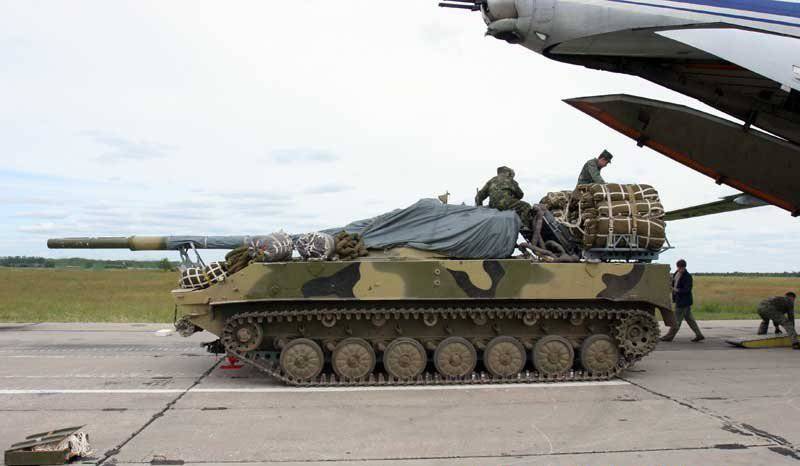
The Sprut-SD ACS can be transported by BTA aircraft and landing ships, parachuted with the crew inside the vehicle and, without any preparation, overcome water obstacles.
Unfortunately, the number of these very popular machines in the troops is not yet large, in total about 40 units have been delivered.
Based on:
http://dic.academic.ru/dic.nsf/enc_tech/4200/СУ
http://www.tankovedia.ru/catalog/sssr/su
http://voencomrus.ru/index.php?id=120
- Sergey Linnik
- Domestic anti-tank self-propelled artillery. 1-Part I
Domestic anti-tank self-propelled artillery. 2-Part I
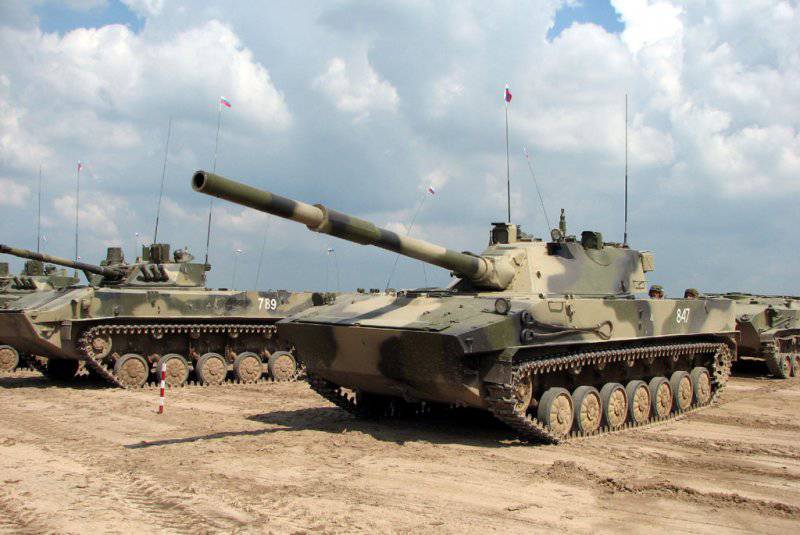
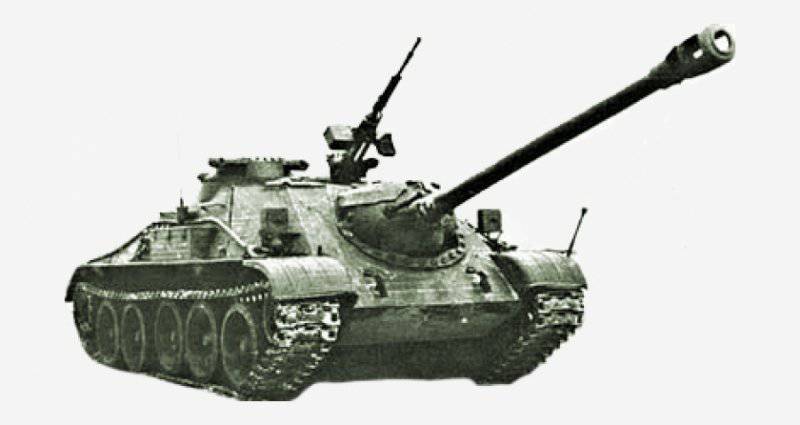
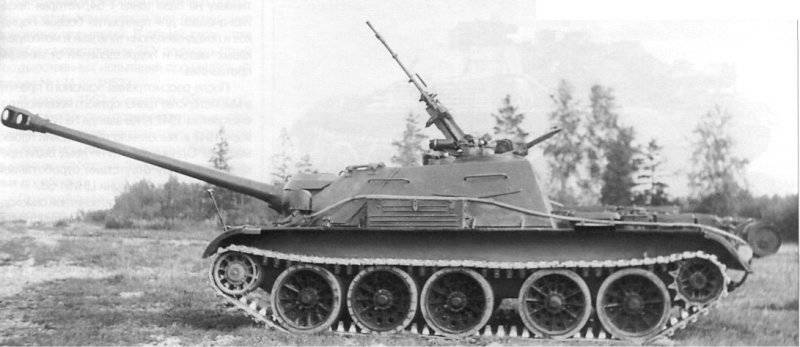
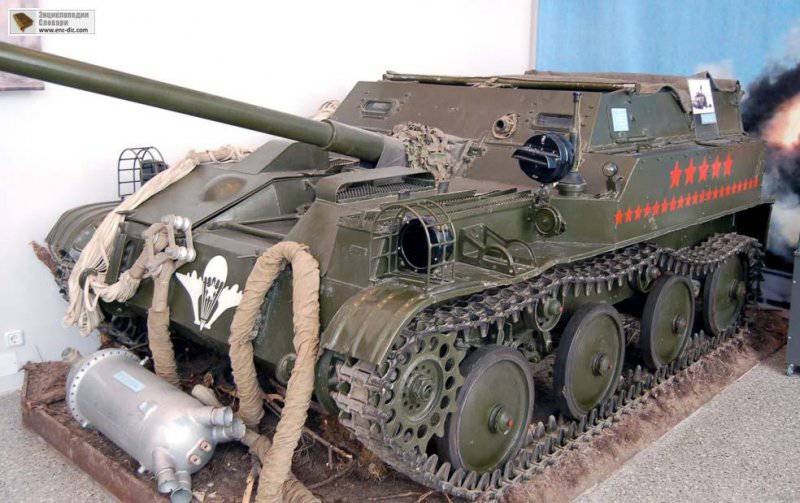
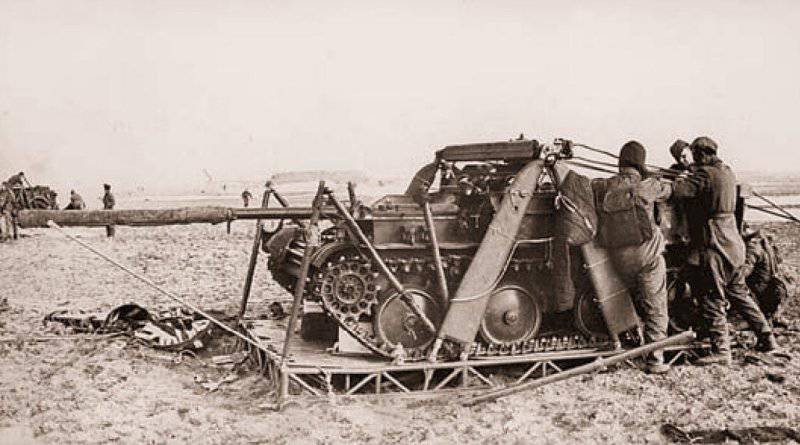
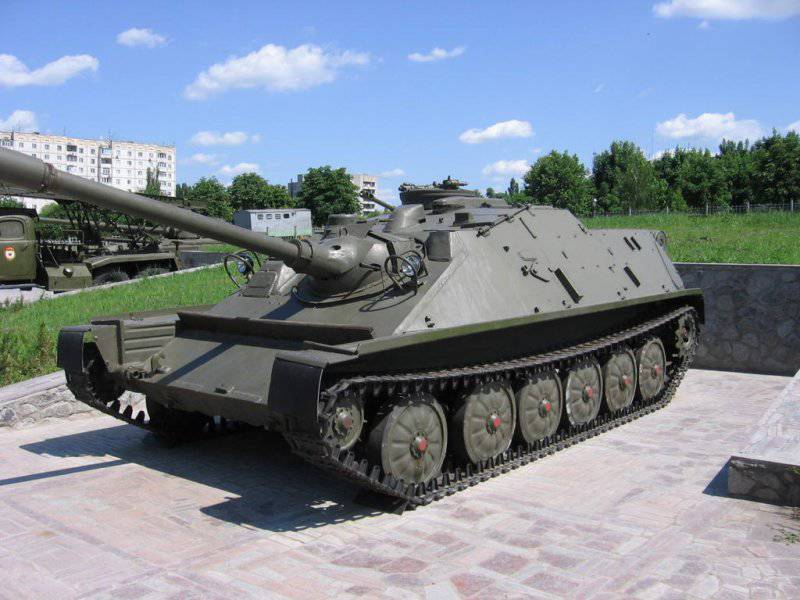
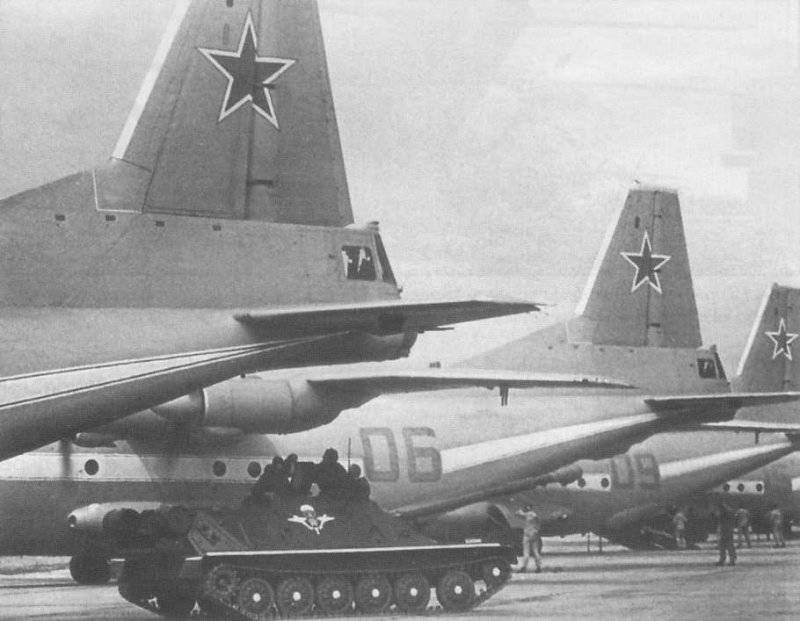
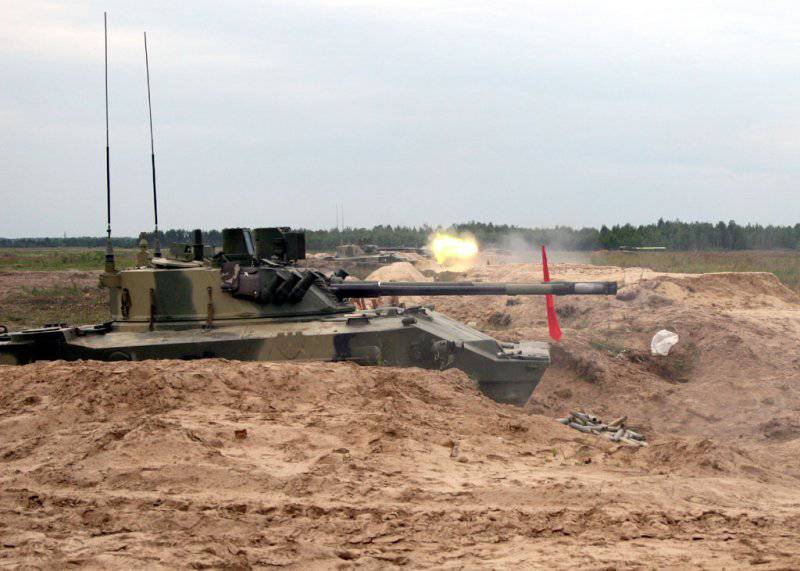
Information